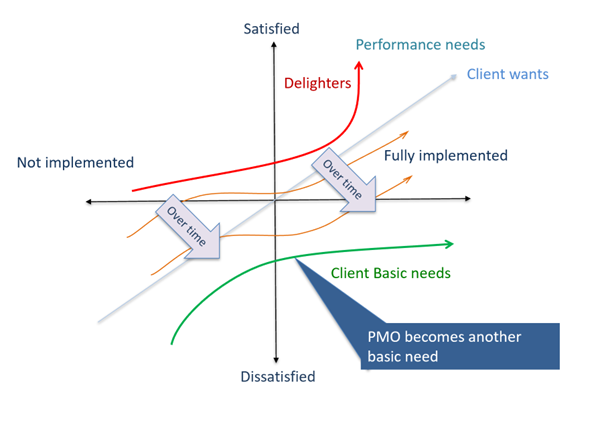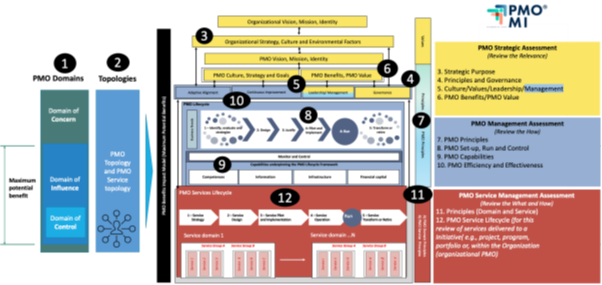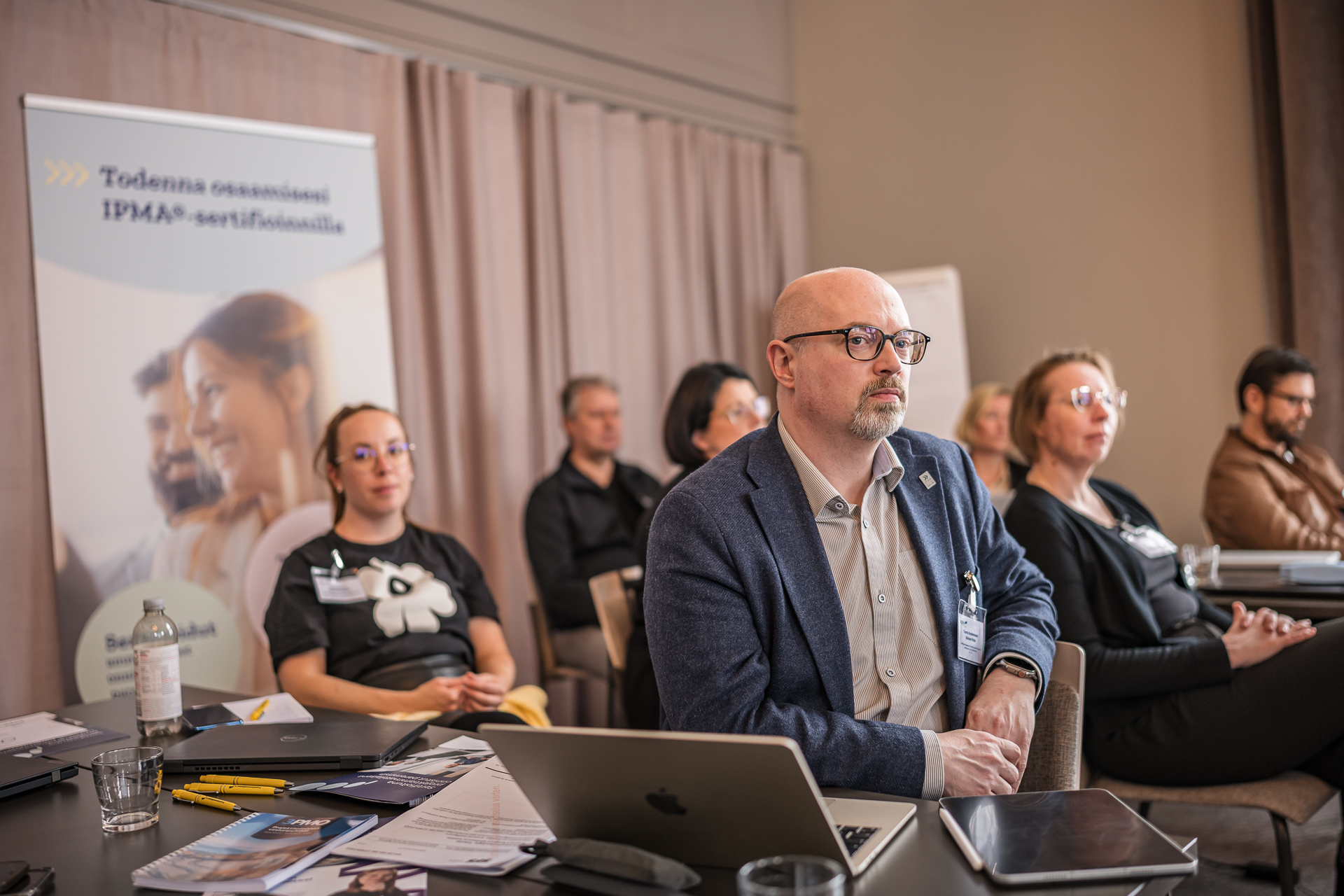The journey of the Project Management Office (PMO) spans more than seven decades, marked by continual transformation in how organizations coordinate and govern projects, programs, and portfolios. Originating in the 1950s as units focused primarily on techniques and tools, PMOs have since evolved into strategic, service-driven entities embedded within context-dependent operating models.
Teksti Robert Joslin
Kuvat AIPMO

Figure 1: Kano Model – Explains why PMOs are challenged to show value
In nature, evolution is unidirectional—species adapt over time, but they do not “de-evolve.” By contrast, organizational systems such as PMOs are human-designed and context-dependent, which makes them susceptible to both progression and regression. Their form and function can shift rapidly in response to leadership changes, strategic realignments, or market pressures.
This article traces that trajectory and introduces the Association of International Project Management Officers (AIPMO), founded in 2015, which has played a pivotal role in shaping what we call the Professional Era (2015 to the present)—characterized by the formalization of principles, the rise of service-based frameworks, and the growing integration of governance and AI.
The Six Eras of PMO Evolution
1. The Foundations Era (1950s–1990s) – Techniques and Tools
PMOs first appeared in the U.S. defense and aerospace sectors, where the complexity of programs demanded structured control. Techniques like PERT (1957), CPM (1957), WBS (1962), and EVMS (1967) became standard tools for planning and monitoring.
From the late 1980s through the early 2000s, standards such as PMBOK® (1987), PRINCE2® (1996), ISO 10006 (1997), and CMMI (2000) provided further structure, while earlier techniques like EVMS (1967) continued to underpin control. PMOs were viewed largely as compliance functions, enforcing methods rather than enabling value.
2. The PMO Dark Ages (~1995–2010) – Template-Driven Confusion
By the late 1990s, PMOs had proliferated with the rapid adoption of PCs and minicomputer-enabled projects—but this growth lacked intellectual clarity. Often defined as “functions” and built from templates or passing trends, they rarely addressed broader organizational needs.
Researchers studied PMOs as static entities (functions), missing that they evolve and must adapt. Many PMOs failed to do so and lost relevance, falling victim to the Kano effect (Kano et al., 1984): what once delighted stakeholders became expected, then ignored.
Figure 1: Kano Model – Explains why PMOs are challenged to show value
The release of P3O® (2008) aimed to standardize roles and terminology, but it lacked frameworks for PMO evolution. PMOs remained misunderstood and often dismantled when they failed to prove value.
3. The Awakening Era (2011–2014) – Fractured Progress
In this period, consulting firms, professional bodies, and academics began exploring PMO design, maturity, and services more seriously. PMOs were increasingly recognized as potential strategic enablers, not just administrative support functions.
However, progress was fragmented and inconsistent. There was no unifying theory, tested frameworks, or shared language, and much of the knowledge remained scattered across isolated studies or practice guides. While this era raised the strategic profile of PMOs, it also revealed the need for coherent frameworks and a formal discipline to guide their development.
4. The Professionalization Era (2015–2019) – Frameworks and the Birth of PMO Management
In December 2015, the Association of International Project Management Officers (AIPMO) was founded to professionalize PMO thinking. Unlike earlier trend-driven approaches, AIPMO took a research-based route, applying sensemaking frameworks and systems design principles to develop leading-edge standards rather than lagging ones.
Key breakthroughs during this era included:
- Establishing the term “PMO Management” as a distinct professional domain alongside project, program, and portfolio management
- Developing the Strategic PMO Lifecycle Framework, the first of ten integrated frameworks that now form AIPMO’s core ecosystem
- Publishing the first edition of the PMO Principles and PMO Services Principles (2nd edition: AIPMO & Joslin, 2022b)
- Laying the groundwork for the PMO Services and Capabilities taxonomy, later published in full form (AIPMO & Joslin, 2022a), categorizing 230+ PMO services across 22 domains
- Introducing the first PMO Topology Framework to classify and map centralized, federated, composite, and networked PMOs as evolving structures
- Creating the first complete PMO certification pathway (IPMO-F®, IPMO-P®, IPMO-E®, CF-IPMO®), spanning graduate to postgraduate levels
- Establishing the first doctorate (DBA) in Strategy, PMO Management, and Leadership, laying the academic foundation for doctoral-level research in these integrated domains
- Embedding research across all books and standards, supported by the 10-point book review system to ensure quality and academic rigor
By the end of this era, PMOs were no longer framed as static “functions” but as dynamic, service-providing entities operating within contextual models, with PMO Management emerging as a recognized discipline.

Figure 2: Integrated frameworks with reference points for AIPMO’s newly released PMO-MI maturity and Impact model
5. The Integration Era (2020–2025) – Governance, Measurement, and Ecosystem Building
Building on its foundations, AIPMO expanded its scope beyond PMOs to encompass broader organizational governance and strategy integration. This phase focused on creating a cohesive, principle-based ecosystem that connects strategy, governance, and PMO management.
Major milestones included:
- Publishing Organizational, Portfolio, Program, and Project Principles (AIPMO et al., 2023), linking governance from the board to project delivery
- Authoring the PMO Management Standard, a principle-based guide validated through case studies, consulting, and certifications
- Completing the ten integrated frameworks that together support the full lifecycle of PMO design, implementation, and evolution
- Establishing the first PhD program in Strategy, PMO Management, and Leadership, advancing the field from practice-driven to research-led professionalization
- 2024 – Launching the PMO-MI® Maturity and Impact Model (after seven years of development), the first maturity and impact framework designed specifically for PMOs, introducing four pioneering scales:
- PMO Services Maturity Scale
- PMO Impact Scale (seven levels, including zero and counterproductive impact)
- Multi-PMO Collaboration Scale
- Multi-PMO Impact Scale
- 2025 – Initiating the first Global PMO Benchmarking Initiative, using PMO-MI data to compare maturity and impact across industries, countries, and PMO types
This era marks the transition from seeing PMOs as isolated units to viewing them as part of a connected enterprise governance ecosystem—where their maturity, impact, and collaboration can now be measured, benchmarked, and continuously improved.
6. The Reflexive Future (2026–onward) – PMOs as Operating Systems for Strategy Execution
PMOs are now evolving into the operating system of enterprise strategy execution—no longer temporary support offices, but institutionalized orchestration engines that align strategy, governance, delivery, and knowledge.
Future-ready PMOs will be:
- AI-enabled and data-driven, integrating predictive analytics and decision intelligence
- Sustainability-aligned, embedding ESG goals into portfolios and governance
- Reflexive, capable of assessing and redesigning themselves dynamically
- Institutionalized, serving as centers of memory, insight, and orchestration
The rapid rise of AI makes defining this future complex. To address this, AIPMO runs workshops and masterclasses that help organizations:
- Explore how AI can be applied to projects, programs, portfolios, and PMOs
- Identify capability gaps and readiness levels for AI adoption
- Design governance and operating models that integrate AI ethically and effectively
Since 2015, AIPMO has provided the building blocks—principles, service frameworks, maturity and impact models, and sustainability modules—to prepare PMOs for this future. As they become reflexive, adaptive, and AI-enabled, their role will no longer be questioned; it will be indispensable.
And perhaps fittingly, the future has already been written into our name: AIPMO—the Association of International Project Management Officers—now seems almost prophetic as PMOs enter the era of AI-powered transformation. In that sense, our name has been future-proofed from the start.
Final Reflection
The story of the PMO is one of reinvention. From control offices to misunderstood functions, and now to strategic integrators, PMOs have moved from the periphery to the core of enterprise strategy.
However, new risks are emerging. Many professionals aspire to work in PMOs without understanding the distinct competences required. PMO design often overlooks conflicts, such as managing both governance and delivery. Moreover, in multi-PMO environments, complexity multiplies—demanding careful operating model design.
Over 100 factors influence PMO success, from service scope to organizational culture. Without rigorous design, PMOs risk repeating past cycles of stagnation. With principles, frameworks, and maturity–impact measurement, however, they can become true enablers of strategic execution.
The future of PMOs is reflexive, adaptive, and AI-enabled. Their role will no longer be questioned—it will be essential. By leading governance, integrating strategy, and orchestrating transformation, PMOs are poised not just to support change but to drive it.
References
AIPMO, & Joslin, R. (2022a). PMO services and capabilities. Association of International Project Management Officers (AIPMO).
AIPMO, & Joslin, R. (2022b). PMO principles and PMO services principles. Association of International Project Management Officers (AIPMO).
AIPMO, Joslin, R., & Müller, R. (2023). Organizational, portfolio, program, and project principles. Association of International Project Management Officers (AIPMO).
Kano, N., Seraku, N., Takahashi, F., & Tsuji, S. (1984). Attractive quality and must-be quality. The Journal of the Japanese Society for Quality Control, 14(2), 39–48.
Author
Dr. Robert Joslin is a management consultant/instructor and the founder of AIPMO. He is a professor at Alma Mater Europaea University, responsible for the PhD program in “Strategy, Project Leadership, and PMO Management.” Robert has more than 25 years of experience in designing, initiating, and delivering large-scale organizational transformation, reengineering, infrastructure, and strategy development programs. He has designed and implemented hundreds of PMOs and, during this time, evolved the PMO-specific methodology that formed the basis of AIPMO’s PMO Strategic Lifecycle Framework. Robert has published books, book chapters, and research papers. He is a peer reviewer for three project management journals and is in the process of co-authoring AIPMO’s Body of Knowledge (BoK), which comprises several books.



